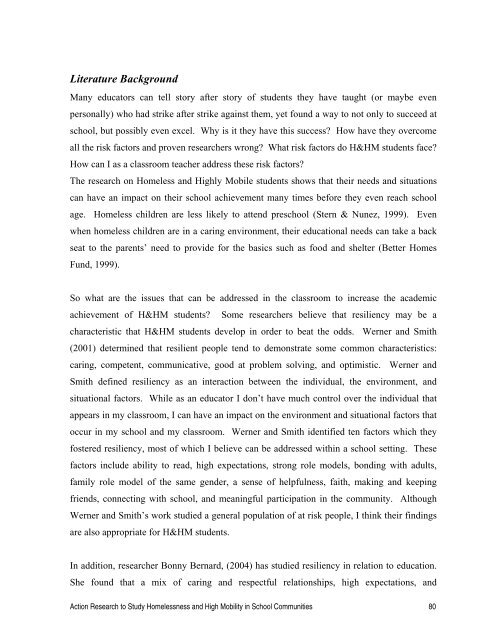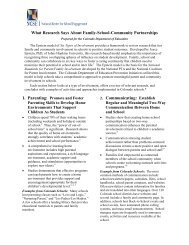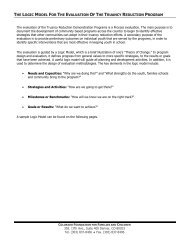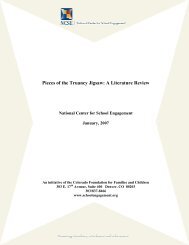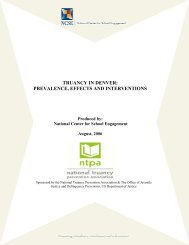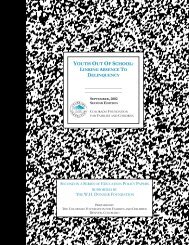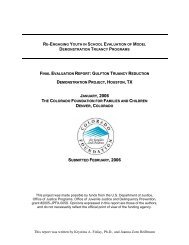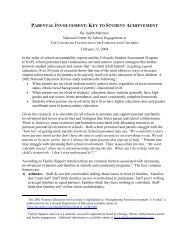Section 1: Academic Achievement - National Center for School ...
Section 1: Academic Achievement - National Center for School ...
Section 1: Academic Achievement - National Center for School ...
You also want an ePaper? Increase the reach of your titles
YUMPU automatically turns print PDFs into web optimized ePapers that Google loves.
Literature Background<br />
Many educators can tell story after story of students they have taught (or maybe even<br />
personally) who had strike after strike against them, yet found a way to not only to succeed at<br />
school, but possibly even excel. Why is it they have this success? How have they overcome<br />
all the risk factors and proven researchers wrong? What risk factors do H&HM students face?<br />
How can I as a classroom teacher address these risk factors?<br />
The research on Homeless and Highly Mobile students shows that their needs and situations<br />
can have an impact on their school achievement many times be<strong>for</strong>e they even reach school<br />
age. Homeless children are less likely to attend preschool (Stern & Nunez, 1999). Even<br />
when homeless children are in a caring environment, their educational needs can take a back<br />
seat to the parents’ need to provide <strong>for</strong> the basics such as food and shelter (Better Homes<br />
Fund, 1999).<br />
So what are the issues that can be addressed in the classroom to increase the academic<br />
achievement of H&HM students? Some researchers believe that resiliency may be a<br />
characteristic that H&HM students develop in order to beat the odds. Werner and Smith<br />
(2001) determined that resilient people tend to demonstrate some common characteristics:<br />
caring, competent, communicative, good at problem solving, and optimistic. Werner and<br />
Smith defined resiliency as an interaction between the individual, the environment, and<br />
situational factors. While as an educator I don’t have much control over the individual that<br />
appears in my classroom, I can have an impact on the environment and situational factors that<br />
occur in my school and my classroom. Werner and Smith identified ten factors which they<br />
fostered resiliency, most of which I believe can be addressed within a school setting. These<br />
factors include ability to read, high expectations, strong role models, bonding with adults,<br />
family role model of the same gender, a sense of helpfulness, faith, making and keeping<br />
friends, connecting with school, and meaningful participation in the community. Although<br />
Werner and Smith’s work studied a general population of at risk people, I think their findings<br />
are also appropriate <strong>for</strong> H&HM students.<br />
In addition, researcher Bonny Bernard, (2004) has studied resiliency in relation to education.<br />
She found that a mix of caring and respectful relationships, high expectations, and<br />
Action Research to Study Homelessness and High Mobility in <strong>School</strong> Communities 80


